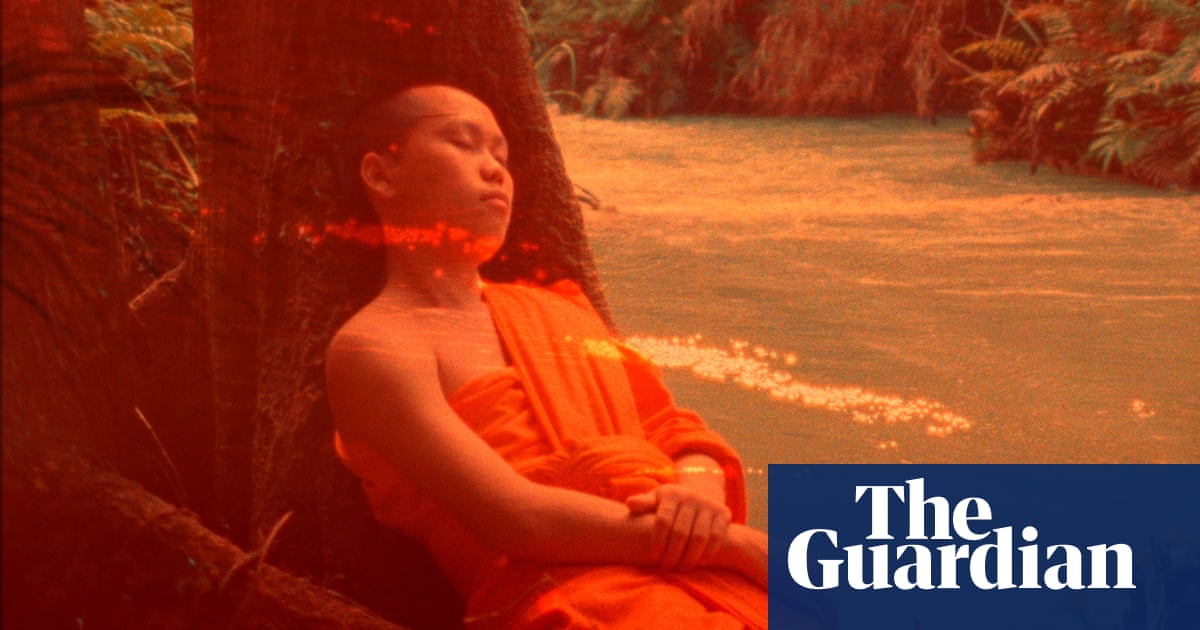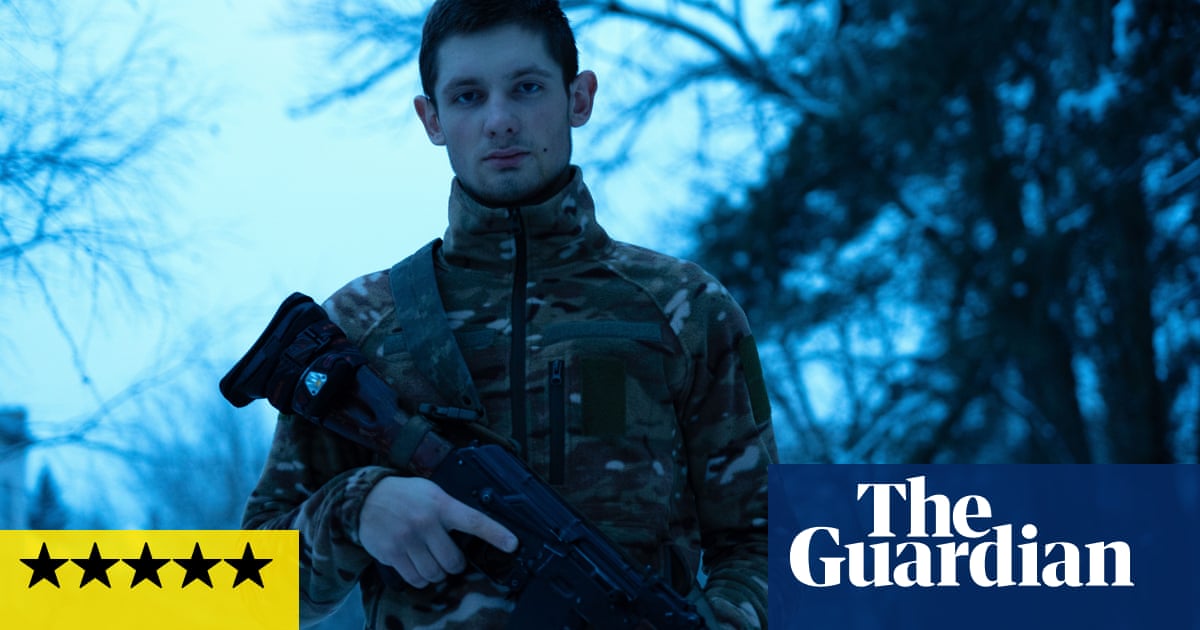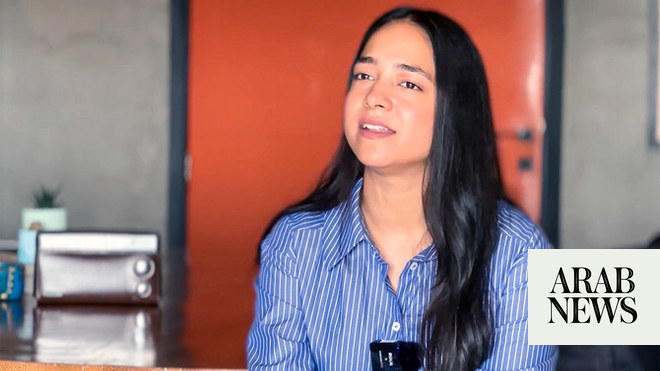
Lois Patiño had been thinking about phantoms when he came up with the idea for a film that people could watch with their eyes closed. The director’s first two features, 2013’s Coast of Death and 2020’s Red Moon Tide, showed the coastal landscape of his native Galicia in sweeping, spectral glory. Myths, ghosts and omens of death swirl as locals recall stories of shipwrecks, fishermen lost at sea, and rumours of a legendary sea monster.
“I’ve been digging into contemplative cinema,” says Patiño, 40, of his earlier work, “and wanted to go further into this idea of an introspective, meditative experience.” He began thinking about “the idea of the invisible in cinema. Suddenly, this very literal idea of making a film to watch with your eyes closed appeared.”
Samsara – its title is a reference to Buddhist notions of the cycle of life, death and rebirth – opens in Luang Prabang, in northern Laos, where a teenager regularly visits an ailing elderly woman named Mon. He reads her passages from the Bardo Thodol, the Tibetan Book of the Dead, a text that is meant to be read aloud, guiding the dead towards rebirth. He also meets up with a friend who is studying in one of the city’s many Buddhist monasteries, and they walk across forests and waterfalls, talking about their future aspirations (the monk hopes to study computers; the teenager wants to become a rapper).
As Mon says her farewells and dies – she hopes to be reincarnated as an animal – there is a 15-minute interlude that asks viewers to close their eyes and journey with her through the afterlife. We then emerge on the other side to join a family living on the coast of Zanzibar, the bright blue ocean in view. A young girl is delighted. A baby goat has just been born.
Samsara premiered in the UK at the London film festival in October, screening at the BFI Imax, a setting that showed how well the film – immersive, detailed, sensorial – fitted the big screen. Landscapes shimmer in full grandeur; sounds blare out of speakers with deliberately varied degrees of intensity. Speaking the day after the premiere, Patiño recalls that the closed-eye film idea lay dormant for a year or two, until he came across the Bardo Thodol, which sparked an interest in “how different cultures imagine the afterlife, how they relate to death”. Pairing a closed-eye sequence with a story about the afterlife felt like “the perfect match”.
Then he had to decide on the locations. “I needed a Buddhist culture,” he says, given the significance of the Bardo Thodol. He was intrigued by Laos, as he says its history is not too well-known in Spain (Thailand, he suggests, was also a no-go given the famously meditative and spiritual work of Thai film-maker Apichatpong Weerasethakul.) Patiño wanted the second part of the film to show a very different world, and inspiration struck after he was invited to Tanzania to give a film workshop. He spent 12 days shooting in Luang Prabang, eight in Zanzibar. He arrived with a crew of three from Spain. The rest of the production, camera crew and actors were locals – a decision he attributes to the film’s low budget, and his desire to tread lightly. “We were very aware of our position of power being from Europe,” he says, and mentions the collaborative nature of the process, which included checking scripts with the crew and actors. “We were lucky they trusted us and our intentions. I think it is important we have dialogue and curiosity” across cultures, he says, “otherwise if we just focus on our own cultural identity … nationalism grows”.
Mixing documentary and fiction, the film blends scripted scenes with sequences where people “speak freely”, including a lengthy conversation in which women at a Zanzibar seaweed farm air frustrations about their work – water from the nearby hotel contaminates the crop; the men don’t do this work because it is thankless. Discussions of death and different mourning rites crop up throughout the film, as does the idea of people being on the brink of major shifts. The young monk in Laos is just about to turn 18, Patiño tells me, at which point he’ll have to decide whether he wants to stay on in the monastery. These stories speak to the film’s broader desire to prompt people to consider their own choices, and whether there are different ways to live. It is Patiño’s “hope”, as a director, “to open [up] what we think of how life can be lived.”
Though it is “viewed” with closed eyes, the screen during Samsara’s afterlife interlude is constantly changing, full of bright flashing multicoloured lights, and sounds weaving in and out. Patiño was inspired by American light and movement artist James Turrell: “I saw Breathing Light in LA, and you felt like you were inhaling and exhaling light.” He also mentions avant garde British-Canadian artist Brion Gysin’s 1959 creation dreamachine, the first work of art to be experienced with closed eyes. The machine was made of a rotating slotted cylinder fitted around a lightbulb. As the cylinder spun, light from the bulb would flicker across the viewer’s closed lids.
Meanwhile, the audio follows a two-part structure: the first section is the film’s sound artist Xabier Erkizia’s interpretation of descriptions of the afterlife in the Bardo Thodol, while the second part plays recordings that Erkizia had taken across the world throughout his career – a girl and her grandfather speaking in Switzerland, a woman cooking in Timor – to represent places where Mon’s soul is tempted to reincarnate. The section is “full of little secrets”, says Patiño.
Samsara is the most narrative-driven film of Patiño’s so far. Bridging the worlds of video art and art cinema, his works often feature landscapes at a slow pace, and have sometimes done away with narrative entirely. A Guardian review of Red Moon Tide observed “the trance-like pacing and mystical meditation might frustrate viewers looking for an easy watch”. Is there something about making meditative films that appeals to him in today’s fast-moving world? The draw, he says, is more about “finding my own way of looking into physical reality” – bringing to mind the way a painter might draw out the fine details in a landscape.
But he understands that “asking people to close their eyes for 15 minutes, when they can see 2,000 shots in that time” is quite an ask, almost a “kind of resistance”. Then again, “there’s always someone in the audience who comes to me and says, ‘I will never forget this experience.’” Why does he think that is? “Suddenly they are asked to close their eyes in a film – and they discover something amazing.”
Samsara is in UK cinemas from 26 January












